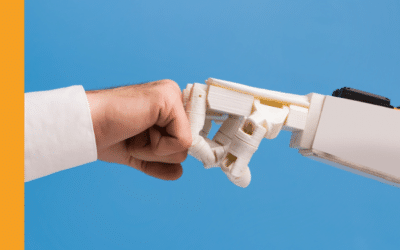So. You’re an organisation, a company. You have employees, and they need training. You’ve invested in the training, and rolled it out across the workforce. Did all your employees enjoy the training? Did they gain from it? Did they learn? Did they all fully engage with the training, or the trainer? Would you even know if the answer to any, or all, of those questions was no? And if it was, what would you change?
Although we’ve all known about gamification for a while, newer technologies, design principles and frameworks help us to make the process more scalable and more reactive, giving the opportunity for greater feedback, through more comprehensive use of data. Ever since those heady and exciting days of the early 1970s spent playing Pong, with its catchy one note soundtrack, to today’s Call Of Duty, game designers have used every known piece of data on how users work, how they think and react, locked into their systems, and as a consequence, have been able to use that data to help users improve. Data gives analysis, and analysis is key to giving us answers to some of the questions listed above.
Gamified learning can dramatically improve employee engagement. The use of game mechanics, and data enables companies to engage at a greater level, more thoroughly, with their employees, by providing them with tailored learning opportunities for professional development. It is, after all, a natural human instinct that drives us to compete, to improve, to beat the next guy. That competitive urge is in all we do. In it to win it. If you snooze, you lose. And no-one wants that. Users strive for the next level, and to try and avoid the massive sighs of disappointment that the words ‘game’ and over’ appearing on the screen can bring. We must take care, however, to ensure that gamified learning consistently leans closer to learning than gaming. There is a point here. Emphasis should always be on bringing value and behavioural change, also to be mindful of the fact that the learning must be kept relevant to the learner’s job.
We know, for instance, that 85% of Wranx users engage daily, usually for just a few minutes, and invariably outside of what we could consider ‘normal working hours’. The process of answering just a few questions every day, taking just a few minutes, eventually becomes as normal as checking Twitter or opening their email, keeping learners engaged and involved, and their grasp of the training fresh and current. And obviously, the engagement is clear. Users become learners, and learners clearly enjoy the process.
Compete, repeat, and enjoy.
Competition between individual employees, between teams and departments, can lead to enhanced staff relations. It builds teams and brings confidence. And as they gain points and rewards, climbing up through the levels, they strive more for success. With that success comes greater engagement. Through gamified training, learners receive feedback via their scores, and can compare not only to their own previous scores, but also those of their colleagues. Through this, as success is rewarded, engagement feeds itself. Learners become focussed on getting to the next level, and begin to find the training not only engaging, but even habit forming.
Repetition is central to gamified training. Repetition is central to gamified training. Repetition is cent…..ok, we get the point! It is a serious point, however. The use of spaced repetition encourages stronger engagement, and enables users to more fully absorb the information. We know that learners value competition, and so will engage more frequently, as they wish to play again, deepening their knowledge all the time, and improving retention. By repeating each game and each level, users will anticipate the next learning opportunity, and relish further challenges. Again, this strengthens engagement.
Enjoyment is a major positive here. The competition, the achievement, the progression through levels, comparing the scores, the strengthening of colleague relationships through competition is, at the end of the day (game?) all good fun. If learners find something enjoyable, they are more likely to wish to repeat the experience, and at each attempt, again, they engage more because they find it interesting, and when learners attention is held, the knowledge sticks. Learning that is both fun and relevant enables more focussed engagement in employees. In the place where these three important elements meet, results are delivered. In the space where they overlap, employees’ engagement is strengthened.
So the benefits of gamified e-learning are clear. Engaged employees, seeking fresh new challenges, focussed on success and its reward, and with a clear and regularly updated grasp of the training, able to support each other in meeting those challenges. Go to next level.
Next level is always better than game over.





